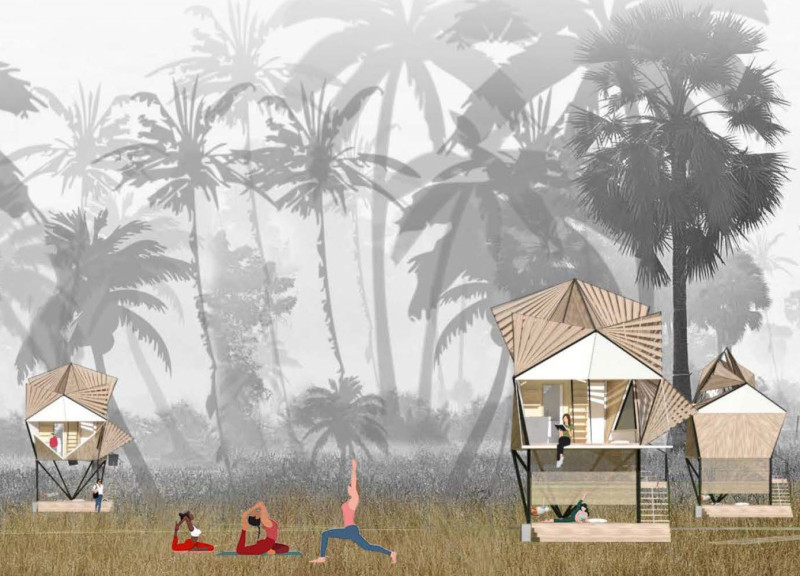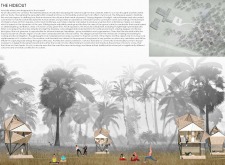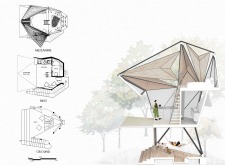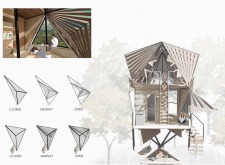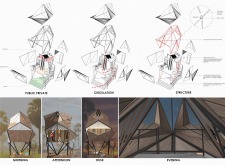5 key facts about this project
The Hideout is located in the Tropical Savannah region of southwest Cambodia. It is designed to provide a place where people can escape from daily distractions and connect with their surroundings. The design encourages a blend of personal reflection and social interaction. This environment allows users to adapt their experience based on individual needs, which is a core concept woven throughout the project.
User Agency and Environmental Interaction
The design prioritizes user agency, letting individuals adjust their environment to suit their preferences. Features such as adjustable awnings and shutters allow people to control the amount of sunlight and ventilation they receive. This flexibility enhances the sensory experience, making it possible for users to feel a direct connection to the external landscape. The architecture not only serves as a shelter but actively encourages engagement with the natural surroundings.
Structural Adaptability Inspired by Origami
The structure takes inspiration from Origami, a craft that requires precision and careful planning. This influence is evident in the design's modular form, which can expand or contract based on user needs. The careful calculations behind each element ensure that the building easily adapts to various situations. This responsive design fosters a close relationship between the building and its environment, allowing for an interaction that feels natural and inviting.
Cultural Integration and Local Craftsmanship
The building's height is informed by local building practices that respond to floods, a common concern in the area. By raising the structure, the design prioritizes safety while also addressing issues of thermal comfort. Local materials are utilized in the construction, supporting the community and preserving cultural identity. This approach not only enhances the aesthetic quality of the project but also connects it to the local context in a meaningful way.
The Hideout features an interplay of built structures and the natural landscape. At full expansion, it reveals its inviting character, creating spaces for relaxation and socialization. When retracted, it blends into the treetops, demonstrating its thoughtful relationship with the landscape while accommodating a range of activities.


